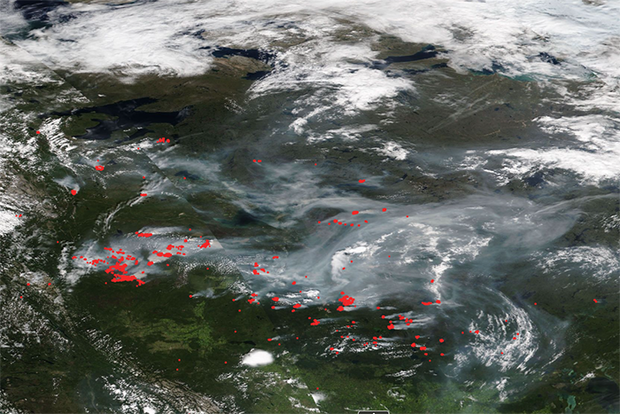Contributions of Canadian wildfire plumes to US ozone air quality

<p>Canadian wildfires burn on July 17, 2024. Credit: NASA Worldview</p>

Canadian wildfires burn on July 17, 2024. Credit: NASA Worldview
Large, damaging wildfires are becoming a common occurrence in Canada, the Pacific Northwest, and California. Five of the most destructive wildfire seasons of the last half-century have occurred in the past seven years. These wildfires can cause significant air pollution: burning biomass emits hundreds of reactive gases, including nitrogen oxides, carbon monoxide, ammonia, and an array of volatile organic compounds.
Wildfire smoke can travel long distances, affecting air quality in cities far from the source of the wildfire. Quantifying how this smoke contributes to the production of secondary air pollutants such as ozone is critical for U.S. air pollution policy. But the complex composition of wildfire smoke and the variable ways it interacts with light, temperature, and urban pollution makes it difficult to assess its impacts on ozone.
The authors analyzed how smoke from nearby fires (i.e. smoke that had taken less than a day to arrive at the study location) affects ozone formation. To assess this, the authors used data on western smoke plumes sampled by aircraft measurements during summer 2018. They found that near-fire smoke was associated with lesser production of ozone, thanks to the rapid conversion of nitrogen oxide emissions from wildfires to peroxyacetyl nitrate (PAN) and particulate nitrate.